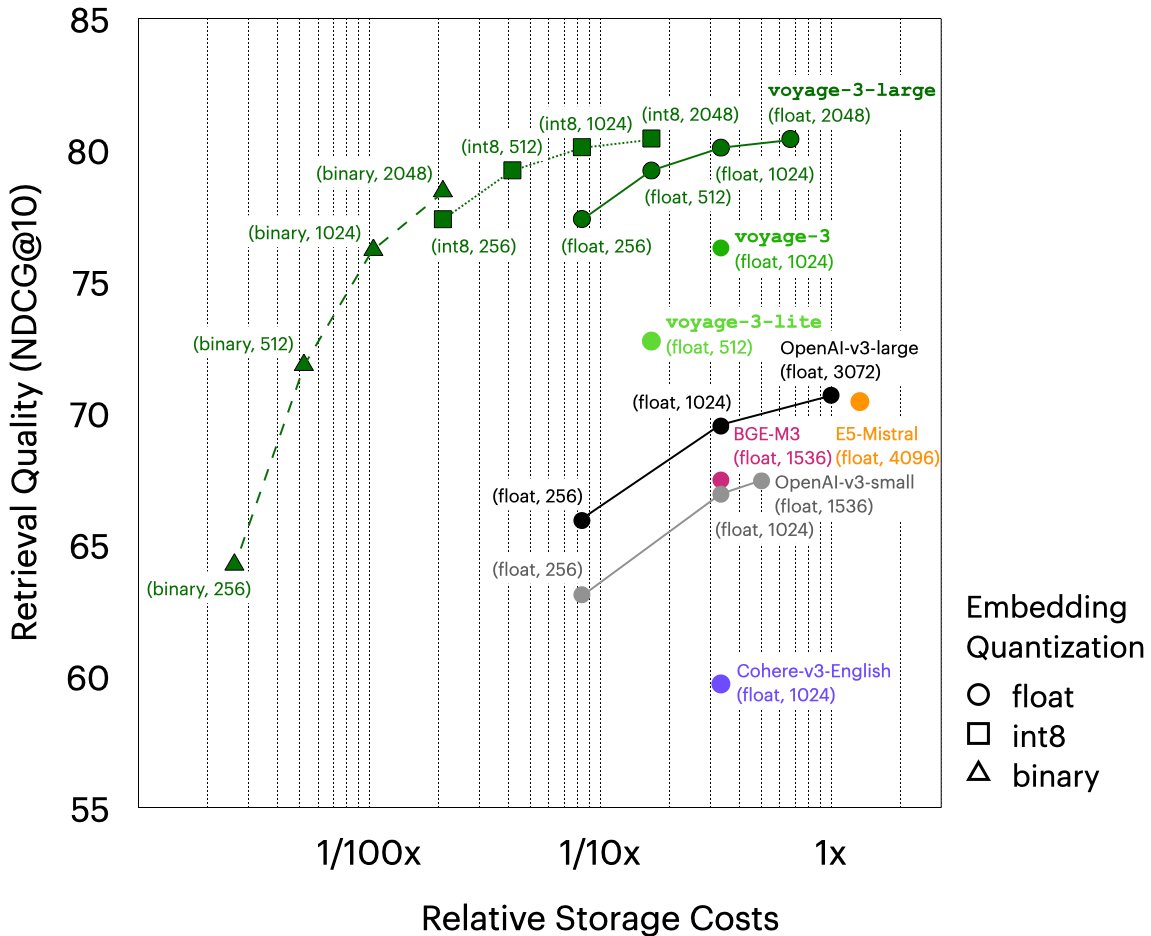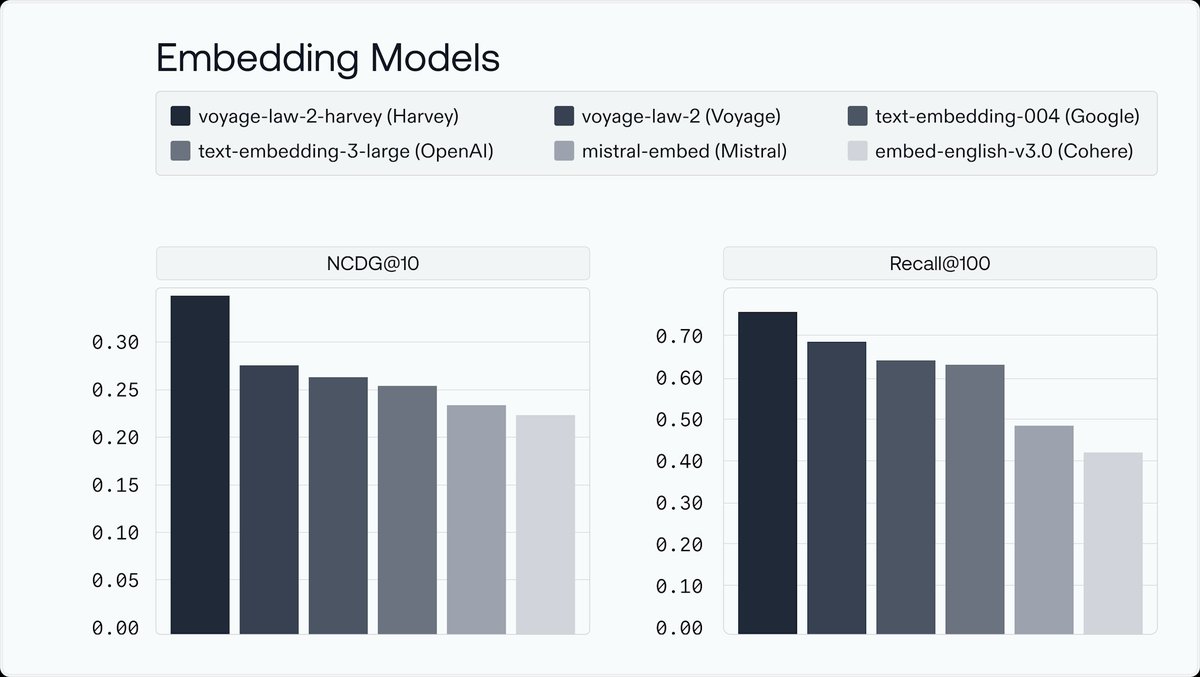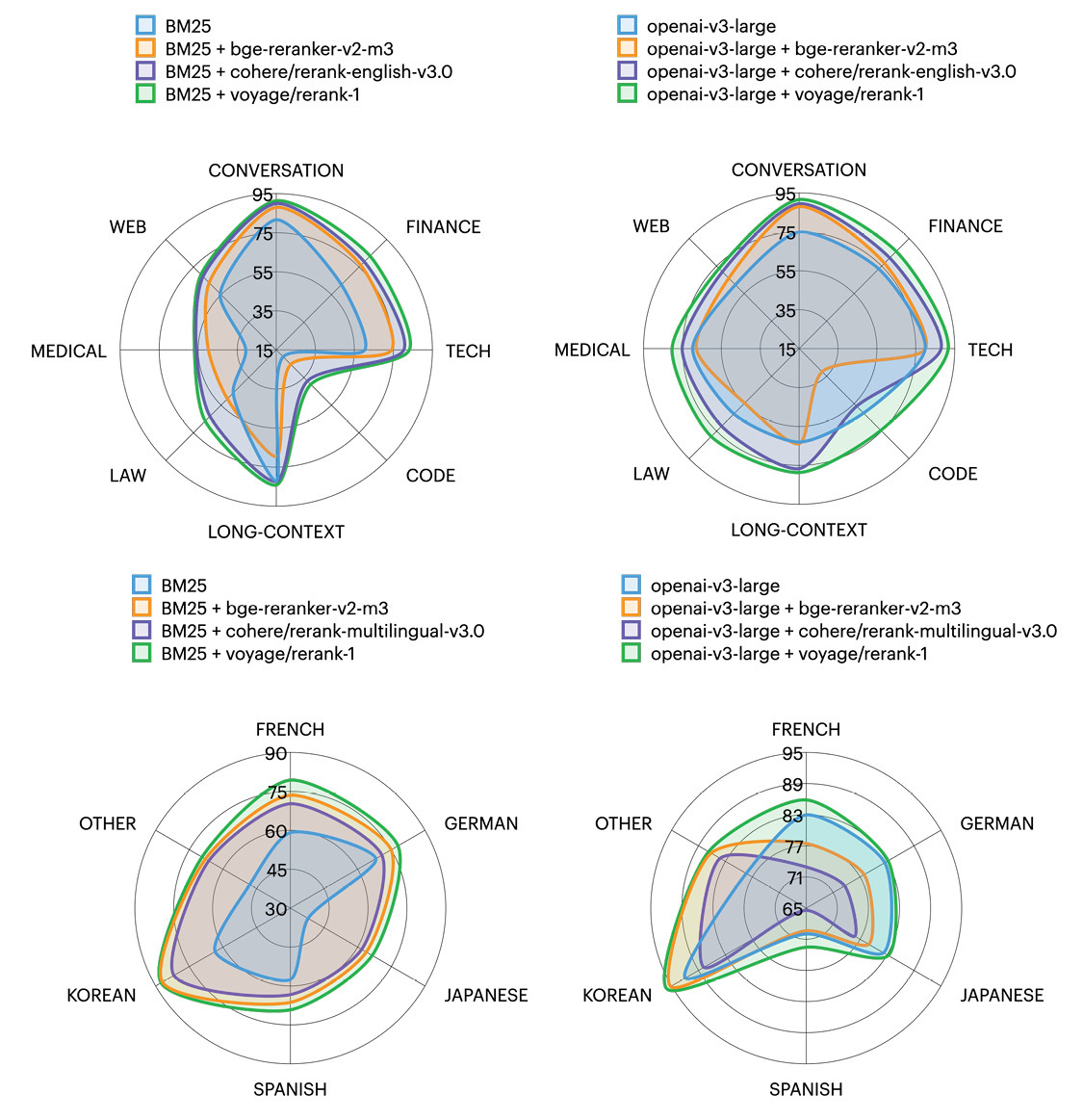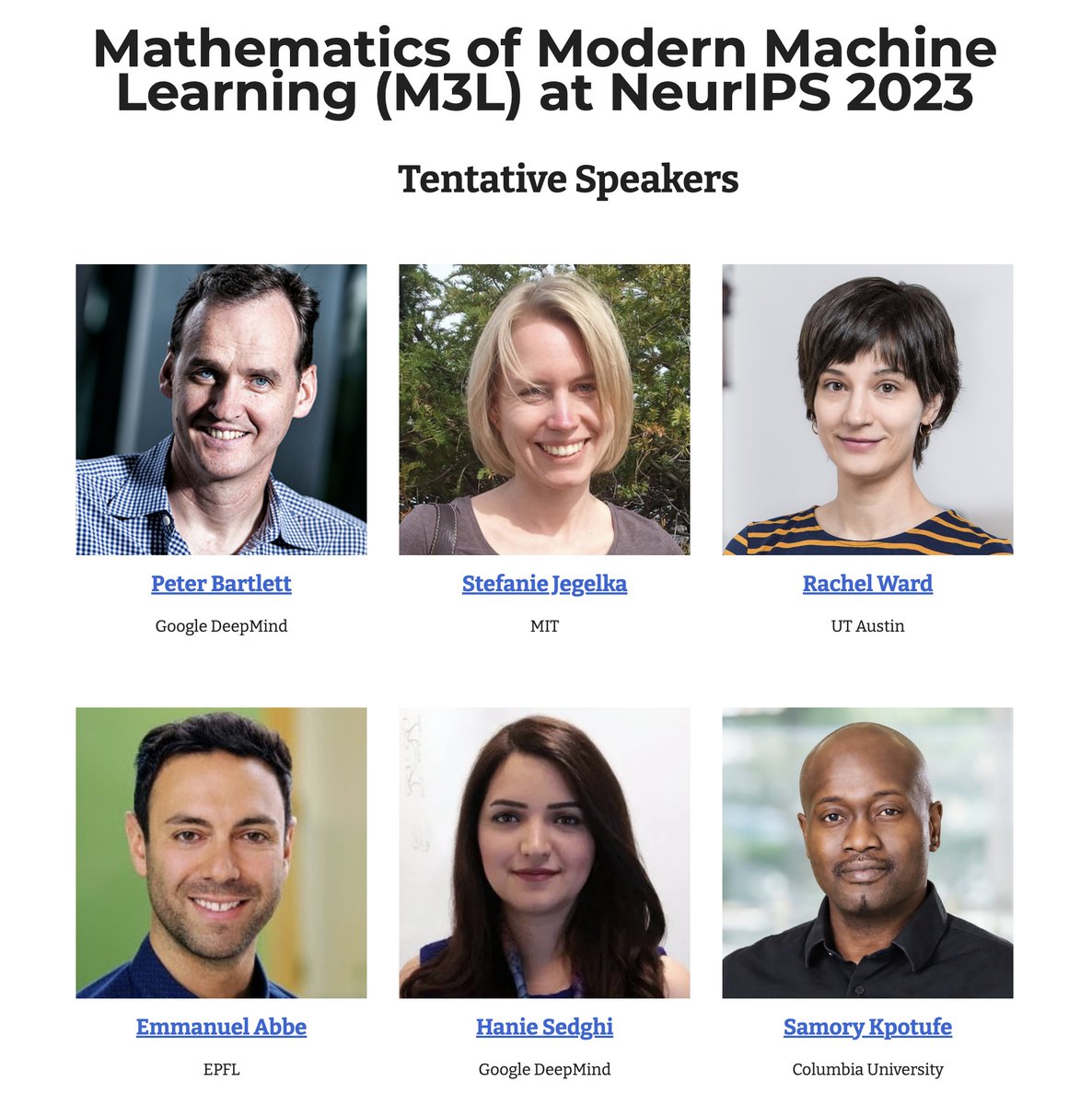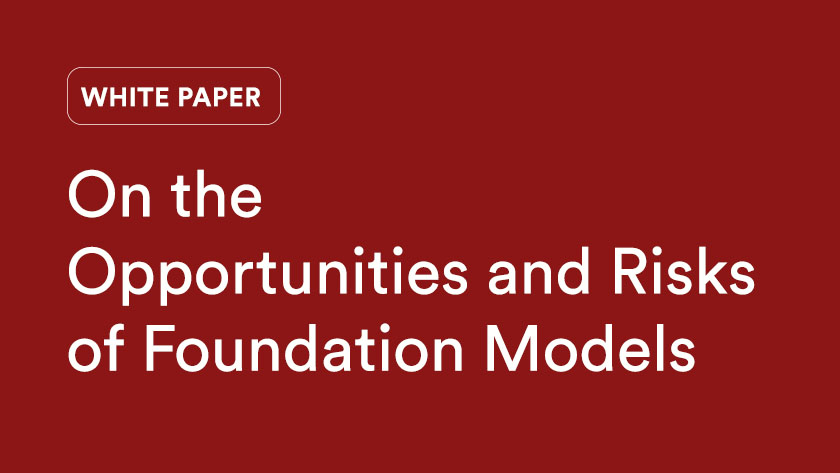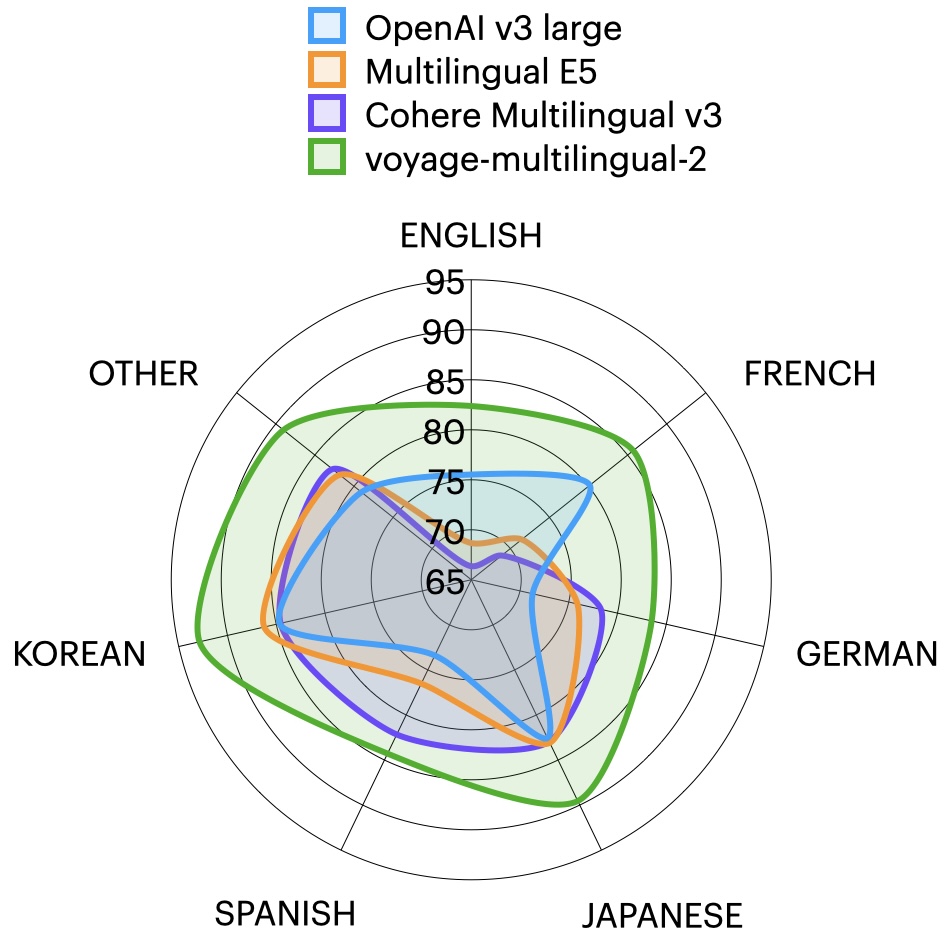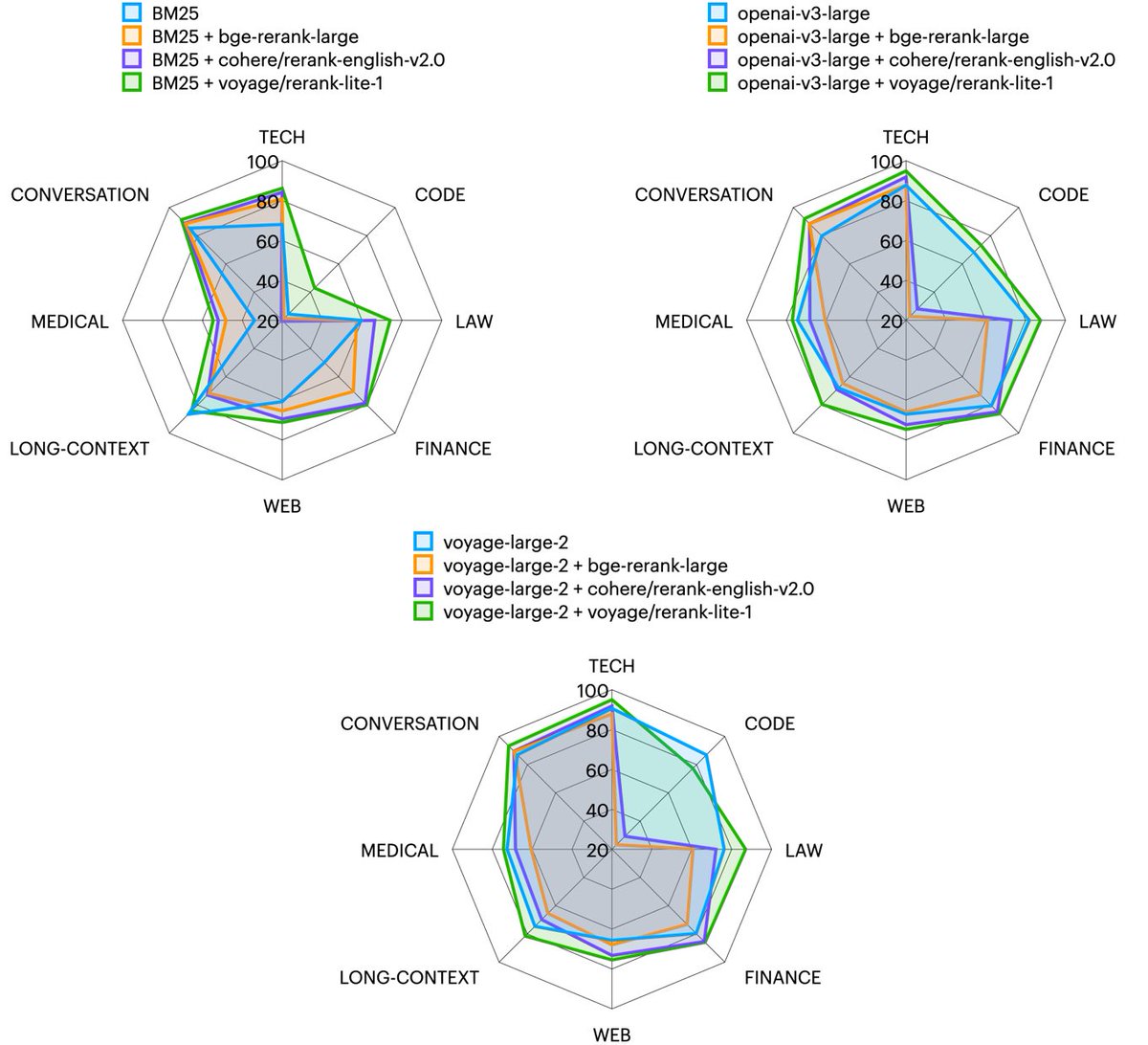
Tengyu Ma
@tengyuma
Followers
35K
Following
253
Media
79
Statuses
549
Assistant professor at Stanford; Co-founder of Voyage AI (https://t.co/wpIITHLgF0) ; Working on ML, DL, RL, LLMs, and their theory.
Joined June 2011
📢 Introducing Voyage AI @Voyage_AI_!. Founded by a talented team of leading AI researchers and me 🚀🚀. We build state-of-the-art embedding models (e.g., better than OpenAI 😜). We also offer custom models that deliver 🎯+10-20% accuracy gain in your LLM products. 🧵
38
94
761
Very honored to be named as a 2021 Sloan Fellow. Thanks to all my group members and collaborators for their wonderful works! Thanks for appreciating our works on ML. Check out them on my Twitter homepage or website! #SloanFellow.
19
7
533
Releasing the code of Sophia 😀, a new optimizer (⬇️). code:
Adam, a 9-yr old optimizer, is the go-to for training LLMs (eg, GPT-3, OPT, LLAMA). Introducing Sophia, a new optimizer that is 2x faster than Adam on LLMs. Just a few more lines of code could cut your costs from $2M to $1M (if scaling laws hold). 🧵⬇️
18
97
516
If you are interested in training deep models without batchnorm, or why batchnorm can help training, please check out our paper! Arxiv link . Thanks to @ajmooch for the tweet and re-implementation!.
Fixup (formerly ZeroInit) by H. Zhang, Y.N. Dauphin, and @tengyuma (ICLR2019): They manage to train deep nets (10k layers!) w/o BatchNorm, by careful init scaling & initializing the 2nd residual conv to 0. My @PyTorch impl. here:
3
153
525
An introductory and short survey on nonconvex optimization for machine learning problems A chapter of Beyond the Worst-Case Analysis of Algorithms edited by @algo_class.
3
85
491
Updates on Sophia ✨. 1. It also works very well for 1.3B and 6.6B, with little tuning on top of tuned Adam! . 2. More tips on efficient hyperparam tuning . 3. More ablation showing all parts are necessary
Adam, a 9-yr old optimizer, is the go-to for training LLMs (eg, GPT-3, OPT, LLAMA). Introducing Sophia, a new optimizer that is 2x faster than Adam on LLMs. Just a few more lines of code could cut your costs from $2M to $1M (if scaling laws hold). 🧵⬇️
4
39
266
Proud to share our best model yet, pushing boundaries again and outperforming all models on all domains (except voyage-code-3 on code). Our binary, 1024-dim embeddings are 5.53% better than OpenA, float, 3072 dim. If you spent $10k monthly on storage, now it’s $104 with us!.
📢 Announcing the new SOTA voyage-3-large embedding model!. • 9.74% over OpenAI and +20.71% over Cohere.• flexible dim. (256-2048) and quantizations (float, int8, binary).• 8.56% over OpenAI with 1/24x storage cost.• 1.16% over OpenAI with 1/192x storage cost ($10K → $52)
9
27
230
Really enjoyed the chat with @saranormous on RAG and embeddings, and all the past work with her on @Voyage_AI_ !.
.@NoPriorsPod drop, all about embeddings models and retrieval systems with Stanford AI prof and @Voyage_AI_ founder @tengyuma . - Headroom in embeddings.- Hierarchical memory for LLMs.- RAG vs fine tuning vs agent chains.- Why we (still) need RAG.- Advice for building RAG systems
6
20
204
🆕📢 Checkout @Voyage_AI_ (during @OpenAI 's drama 👀). 1. Officially #1 embedding on @huggingface MTEB leaderboard, ahead of @OpenAI ada & @cohere new v3 😜. 2. Now supporting distinguishing docs & queries — different prompts added in the backend, gaining 1.2% on average.
11
30
202
🆕📢 @Voyage_AI_'s new embedding models: voyage-2 & voyage-code-2!. 1. 🔼 +17% accuracy gain on 11 code datasets vs @OpenAI .2.🥇 # 1 on MTEB & diverse corpora.3.⚡ Production-ready latency.4.🛒 Available on AWS Marketplace, meeting compliances.5.📜 16K context length. #LLMs
6
37
195
Past works found empirically that one-layer transformers can learn in-context the gradient descent algorithm (when they are trained with in-context linear regression datasets). In our paper at #ICLR2024 , we give theoretical proof for why it’s GD (rather than other algorithms)🧵
4
26
186
Our journey started last year when we realized that embedding models were underloved and under-explored. Today, we have the best-in-class embeddings & rerankers, incredible partners such as @AnthropicAI , @harvey__ai, and several deployment options. Huge thanks to our.
Thrilled to share that we've closed $28M in funding, led by @CRV, with continued support from @wing_vc and @saranormous. Also excited to onboard strategic partners @SnowflakeDB and @databricks!. Building the world’s best models for RAG and search 🧵🧵🧵:.
8
14
165
It's pretty impressive that a 400M model can be better than OpenAI v3 large!.
📢 Announcing a new generation of Voyage embedding models: voyage-3 and voyage-3-lite!. When compared with @OpenAI's v3 large:.voyage-3: + 7.5% accuracy, 2.2× cheaper, 3× smaller embeddings, 4× context.voyage-3-lite: + 3.8% accuracy, 6× cheaper, 6× smaller embeddings, 4× context
1
13
136
Some interesting (surprising?) findings: . Larger models know more but are also more receptive to new information in the in-context exemplars. Instruct-tuning helps in-context learning of semantically-unrelated labels but hurts in-context learning of flipped labels.
New @GoogleAI paper: How do language models do in-context learning? Large language models (GPT-3.5, PaLM) can follow in-context exemplars, even if the labels are flipped or semantically unrelated. This ability wasn’t present in small language models. 1/
2
22
125
OpenAI’s embedding v3 were out 🎉! Curious about its quality? We tested on 11 code retrieval datasets & 9 industry-domain datasets:. 1. @OpenAI v3 > ada-002 & cohere (except v3-small on code).2. voyage-code-2 is the best with + 14% margin on code & + 3% on industry docs 🚀
🆕📢 @Voyage_AI_'s new embedding models: voyage-2 & voyage-code-2!. 1. 🔼 +17% accuracy gain on 11 code datasets vs @OpenAI .2.🥇 # 1 on MTEB & diverse corpora.3.⚡ Production-ready latency.4.🛒 Available on AWS Marketplace, meeting compliances.5.📜 16K context length. #LLMs
6
22
126
“The length of CoT can be super long”: if I still remember the paper correctly, the CoT steps needed is linear in the number of gates needed to solve the problem, or linear in the input length for a NC1-complete problem. I also vaguely remember that it takes exponential number.
While CoT is super useful, I kindly disagree that blindly scaling it up is all we need. The paper proposes a universal approximation theorem by explicitly constructing Transformer weights to fit to the family of tasks. Although the depth can be constant, the length of CoT can.
3
12
117
New engineering interview at @Voyage_AI_ starting from Q3: . 1. pick one or more challenging questions that typically take 5 hours .2. ask the candidate to solve them in 1 hour.3. allow them to use GPT4. pros: testing the right skill.cons: need to recalibrate when GPT-5 is out.
15
10
109
Very honored to receive it!.
Recent Ph.D. grads Tengyu Ma (center left) and Ryan Beckett (center right) received Honorable Mentions for the @TheOfficialACM's Doctoral Dissertation Award for Outstanding Ph.D. Thesis at their gala event on Saturday. @tengyuma
3
1
110
(b) We used a lot of *theoretical* thinking in the research process, besides recalling our optimization classes :). Joint work with an amazing team at Stanford: @HongLiu9903, @zhiyuanli_, @dlwh, @percyliang.
3
4
107
🆕📢 @Voyage_AI_'s new embedding model for legal and long-context retrieval and RAG: voyage-law-2!. 1.🥇 # 1 on MTEB legal retrieval benchmark with a large margin.2.📜 Best quality for long-context (16K) .3.✨ Improved quality across domains.4.🛒 On AWS Marketplace . #RAG #LLMs
4
25
92
How to make the minority/rare classes generalize better? Enforcing class-dependent margins (following a theory-inspired formula) helps a lot! Please check out our recent paper if you are interested in learning imbalanced datasets @adnothing.
1
19
94
Our method decomposes the embedding for a word (e.g, "spring") into a sum of multiple sense/discourse embeddings (e.g., different meanings of "spring"). I still remember those fun times when I learned more meanings of polysemous English words 👇
With sparse coding again popular for interpretability in LLMs please look at older work! "Latent structure in word embeddings" Atoms of meaning" Decoding brain fMRI via sentence embeddings
2
11
91
Super excited to partner with @harvey__ai's team and @gabepereyra! . TLDR: our legal embedding model, voyage-law-2, already improves retrieval quality on general legal documents, but fine-tuning it on specific legal data helps a lot more.
@harvey__ai is excited to partner with @tengyuma and @Voyage_AI_ to build custom legal embeddings for our RAG and agent systems.
2
15
79
A cross-encoder reranker can significantly improve your search / retrieval accuracy and is incredibly easy to use — it’s just an API call on top of any search methods. Very impressed by our team at @Voyage_AI_ for the amazing work on this SOTA reranker!.
🆕📢 We are thrilled to launch rerank-1, our best general-purpose and multilingual reranker! It refines the ranking of your search results with cross-encoder transformers. It outperforms Cohere's english-v3 on English datasets and multilingual-v3 on multilingual datasets 🚀.
3
9
73
It's great to see ML theory workshops again at NeurIPS.
🚨💡We are organizing a workshop on Mathematics of Modern Machine Learning (M3L) at #NeurIPS2023!. 🚀Join us if you are interested in exploring theories for understanding and advancing modern ML practice. Submission ddl: October 2, 2023.@M3LWorkshop
0
4
67
With strong multimodal embeddings, we can search the PDFs, slides, tables, etc, by screenshots, without unstructured data ETL. The embedding models will do even more in the future!.
📢 Announcing voyage-multimodal-3, our first multimodal embedding model!. It vectorizes interleaved text & images, capturing key visual features from screenshots of PDFs, slides, tables, figures, etc. 19.63% accuracy gain on 3 multimodal retrieval tasks (20 datasets)! 🧵🧵
3
6
71
Thanks for trying our optimizer! hope that Sophia can save some compute for FAIR and others :).
No replies here. Decided to try out on our own benchmarks, consisting of an auto-regressive, multi-modal pre-training at scale. Pretty complex setting. Yellow: Tuned (LR) AdamW.Purple: Tuned (LR) Sophia. Average Loss:
1
3
65
A simple importance resampling can help select good training data for LMs: our filtered Pile dataset improves 2% GLUE acc! . Main idea: estimate importance weights in an n-gram feature space.
Data selection for LMs (GPT-3, PaLM) is done with heuristics that select data by training a classifier for high-quality text. Can we do better?. Turns out we can boost downstream GLUE acc by 2+% by adapting the classic importance resampling algorithm. 🧵
2
7
63
and SoTA among whole-proof generation methods on miniF2F, ProofNet, and PutnamBench, and double the previous best results on LeanWorkBook. (reposting because it seems that this table has much more views 😝)
RL + CoT works great for DeepSeek-R1 & o1, but: . 1️⃣ Linear-in-log scaling in train & test-time compute.2️⃣ Likely bounded by difficulty of training problems. Meet STP—a self-play algorithm that conjectures & proves indefinitely, scaling better! 🧠⚡🧵🧵.
1
8
60
hallucination -> guessing properly with quantification of the confidence level 😊.
When LLMs are unsure, they either hallucinate or abstain. Ideally, they should clearly express truthful confidence levels. Our #ICML2024 work designs an alignment objective to achieve this notion of linguistic calibration in *long-form generations*. 🧵
1
14
58
An exciting report led by @percyliang and @RishiBommasani! I was involved in the theory section (Sec 4.10) which presents an analysis framework used in many recent papers; please check it out! (Just in case you filter tweets by only arxiv link: :) ).
NEW: This comprehensive report investigates foundation models (e.g. BERT, GPT-3), which are engendering a paradigm shift in AI. 100+ scholars across 10 departments at Stanford scrutinize their capabilities, applications, and societal consequences.
1
17
56
Indulging in this @OpenAI's incident report, my real-world analogy is: . A CEO introduces a new extensive perf review system, so that their calendar gets blocked with perf reviews 24/7, so that the board can't even schedule a meeting to override the CEO to stop it. 🤷♂️🤷♀️🤣🤣.
4
5
53
The main principle is conservatism in the face of uncertainty --- we penalize the reward by the uncertainty of the learned dynamics. We also had a new version with more ablation studies! (same link as below).
Offline RL may make it possible to learn behavior from large, diverse datasets (like the rest of ML). We introduce:. MOPO: Model-based Offline Policy Optimization. w/ Tianhe Yu, Garrett Thomas, Lantao Yu @StefanoErmon @james_y_zou @svlevine @tengyuma.
0
9
50
With the right training process, a multilingual embedding model can also have great performance on English 😊.
🌍📢 Launching our multilingual embeddings, voyage-multilingual-2!. 👑 Average 5.6% gain on evaluated languages, including French, German, Japanese, Spanish, and Korean.📚 32K context length.🛒 On AWS Marketplace. Check us out! 👉🏼 The first 50M tokens are on us. #RAG #LLM
3
6
48
@bradneuberg @HongLiu9903 @zhiyuanli_ @dlwh @percyliang @StanfordAILab @stanfordnlp @StanfordCRFM @Stanford Unfortunately we've used all of our tiny compute resource on LLMs. We will release the code very soon and hopefully someone will try it out.
2
0
48
Navigating through diverse quality data from multiple sources to train your mega LLMs?. Mix them right with DoReMi 🎶:. Optimized data domain mixtures lead to a 2.6X speed-up! . @StanfordAILab @stanfordnlp @StanfordCRFM @GoogleAI.
Should LMs train on more books, news, or web data?. Introducing DoReMi🎶, which optimizes the data mixture with a small 280M model. Our data mixture makes 8B Pile models train 2.6x faster, get +6.5% few-shot acc, and get lower pplx on *all* domains!. 🧵⬇️
4
7
48
Very cool work! . "Let's learn from these examples", "Let's think step by step", and "Let's recall what you knew". Prompting LLMs sounds increasingly similar to tutoring elementary or high school students 😀😀.
Introducing Analogical Prompting, a new method to help LLMs solve reasoning problems. Idea: To solve a new problem, humans often draw from past experiences, recalling similar problems they have solved before. Can we prompt LLMs to mimic this?. [1/n]
2
5
44
We partnered with @LangChainAI to help enhance their official chatbot, live at Both our base and fine-tuned embeddings improve both the retrieval and response quality, and the latter is deployed!. Check out for more details.
5
8
48
Very excited to announce @Voyage_AI_'s SOTA reranker!.
Rerankers refine the retrieval in RAG. 🆕📢 Excited to announce our first reranker, rerank-lite-1: state-of-the-art in retrieval accuracy on 27 datasets across domains (law, finance, tech, long docs, etc.), enhancing various search methods, vector-based or lexical. 🧵
2
7
46
Surprised and puzzled by why in-context learning emerges? Please check out our theoretical work on it, led by @sangmichaelxie!.
Why can GPT3 magically learn tasks? It just reads a few examples, without any parameter updates or explicitly being trained to learn. We prove that this in-context learning can emerge from modeling long-range coherence in the pretraining data!. (1/n)
1
3
43
Looking forward to UAI! Will give a tutorial on the theory of deep learning. (Thanks to @shakir_za for the organizing!).
My work as tutorial chair for @uai2018 is over and we have a fantastic set of tutorials this year. Everyone going to Monterey, you are in for a treat, with @AnimaAnandkumar @zacharylipton @riedelcastro @tengyuma and others ✍🏾📚🏖
0
8
43
Hong (@HongLiu9903) will present Sophia at ES-FOMO workshop #ICML2023 (7/29, 1pm Ballroom A). Please join us and check out latest results of Sophia on 1.5B and 7B models!! (Also adding more results to the repo.) . code: paper:
Adam, a 9-yr old optimizer, is the go-to for training LLMs (eg, GPT-3, OPT, LLAMA). Introducing Sophia, a new optimizer that is 2x faster than Adam on LLMs. Just a few more lines of code could cut your costs from $2M to $1M (if scaling laws hold). 🧵⬇️
12
7
41
It's really enjoyable to collaborate with @LangChainAI team (@baga_tur, @j_schottenstein, @zebriez, and others) on integrating Voyage embeddings and improve the Chat Langchain !! 🚀🚀 . Try our embeddings and/or let us help to improve your RAG!.
🚀@Voyage_AI_ + LangChain 🚀. A few weeks ago @tengyuma and the folks at Voyage AI came to us saying they had embedding models that would markedly improve retrieval for Chat LangChain. We agreed to give it a shot and . turns out they were right! Check out our latest blog to.
2
3
40
The more theoretical paper here ( will be in #NeurIPS2022. Please check out our poster at Hall J #920, Wed 11am-1pm!.
Pretraining is ≈SoTA for domain adaptation: just do contrastive learning on *all* unlabeled data + finetune on source labels. Features are NOT domain-invariant, but disentangle class & domain info to enable transfer. Theory & exps:
1
6
38
We scaled STP’s training compute by another 2x, and achieved new SoTA for whole-proof generation methods on miniF2F, ProofNet, and LeanWorkbook! . Checkout for our updated code, data, and model!
RL + CoT works great for DeepSeek-R1 & o1, but: . 1️⃣ Linear-in-log scaling in train & test-time compute.2️⃣ Likely bounded by difficulty of training problems. Meet STP—a self-play algorithm that conjectures & proves indefinitely, scaling better! 🧠⚡🧵🧵.
1
7
38
This appears in #ICLR2021. Please check out our paper, videos, poster, code, etc!.ICLR poster link: ArXiv: Github:
DL models tend to struggle with heteroskedastic and imbalanced datasets, where long-tailed labels have varying levels of uncertainty, partly bc it's hard to distinguish mislabeled, ambiguous, and rare examples. We propose a new regularization technique:
3
4
38
#NeurIPS2020 How to accelerate distributed optimizers? We develop FedAc that accelerates the standard local SGD with provable improvement in convergence rate and communication efficiency. It turns out the vanilla acceleration is not the best! .Paper:
1
4
36
@OpenAI’s embedding v3 were out 🎉! Curious about its quality? We tested on 11 code retrieval datasets & 9 industry-domain datasets:. 1. OpenAI v3 > ada-002 and cohere (except v3-small on code). 2. voyage-code-2 is the best with + 14% margin on code & + 3% on industry docs 🚀
🆕📢 @Voyage_AI_'s new embedding models: voyage-2 & voyage-code-2!. 1. 🔼 +17% accuracy gain on 11 code datasets vs @OpenAI .2.🥇 # 1 on MTEB & diverse corpora.3.⚡ Production-ready latency.4.🛒 Available on AWS Marketplace, meeting compliances.5.📜 16K context length. #LLMs
2
4
35
Please check out our paper for more experiments, examples of generated conjectures, and ablation studies. Joint work with @kefandong. Feedback and comments are more than welcome!.
1
2
36
Hong (@HongLiu9903) will give an oral presentation at #ICML2023 on this paper (Ballroom A, Jul 27, 16:04 HST). The poster presentation will be at at Poster Session 5 (Exhibit Hall 1), Jul 27, 10:30 HST. Please check them out!.
Does the validation pre-training loss in language modeling always correlate with downstream perf.? . We find it's not necessarily true even with the same architecture. This means that the implicit bias of pre-training algorithms is another key factor!.
0
4
31
The results are on linear models. See Figure 8.12 of page 115, for details. The other two relationships (error vs # params, norm vs # params) are visualized below. Experiments and figures are by Kefan Dong (@kefandong).
3
3
31
It's sad to lose Luca. His papers on spectral graph theory were among the first few papers I read in graduate school and have been inspirational since then.
Tragic news. Luca Trevisan passed away today. The talk he prepared in his final weeks for the TCS4all workshop will be given virtually in his honor on Monday. I hope many of the TCS community can attend.
0
2
27
@capetorch @HongLiu9903 @zhiyuanli_ @dlwh @percyliang @StanfordAILab @stanfordnlp @StanfordCRFM @Stanford Do you mean learning rate schedules? We are using the standard cosine LR which has an initial warmup period, and decays 1/10 of the peak LR eventually. The LR schedule is also plotted in Figure 5a.
0
0
30



















